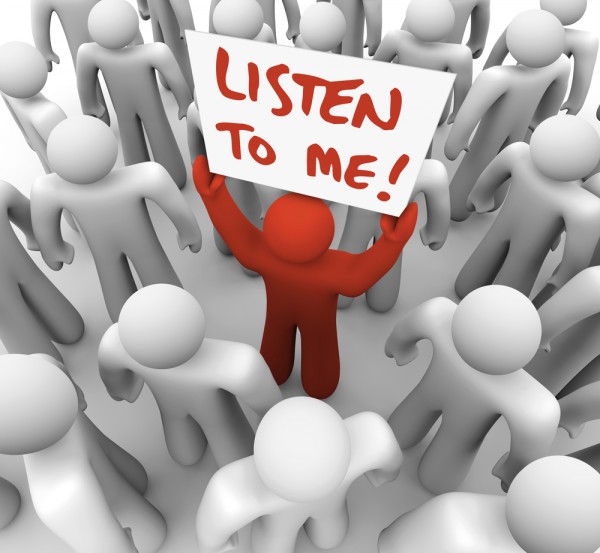Short Attention Spans and Social Media: How to Fight Back
How many Facebook/Twitter/G+ checks, new tab opens and email refreshes will you perform today? In the next 30 minutes? In the time it takes you to read this? Growing evidence shows that social media, among other Internet-age phenomena, is actually rewiring our brains, creating shorter attention spans than ever before. Depending on what you believe, […]
How many Facebook/Twitter/G+ checks, new tab opens and email refreshes will you perform today? In the next 30 minutes? In the time it takes you to read this?
Growing evidence shows that social media, among other Internet-age phenomena, is actually rewiring our brains, creating shorter attention spans than ever before. Depending on what you believe, it may also be making us stupid and/or causing the end of the golden age of blogging.
Our short attention spans are most certainly to blame for the rise of storytelling in the form of bullet-point lists and infographics (even infographics about…our short attention spans). It’s pointless to assign blame or lament the end of reading. It doesn’t really matter how it happened — this is the marketing world we live in now, so we’ve got to react accordingly.
The shift affects both social media audiences — bombarded daily with an overwhelming barrage of things to read, watch and respond to — and social media producers. By the nature of our work, social media managers are performing countless short-term tasks (scheduling updates, responding to brand mentions) throughout the day, making it easy to lose focus.
So if you’ve made it this far, congratulations. Try these tips to maximize your audience’s attention and keep your own focus and sanity as you work in social media.
For Social Media Audiences
Keep It Short
Like, really short. A Buddy Media study showed that Facebook posts of 80 characters or fewer have a 27% higher rate of engagement than longer posts, though they only make up a small fraction of all updates posted.
When writing, try to use Twitter’s 140 character limit as the baseline for each major thought you’re communicating. (I’ve gone so far as using the Twitter window to compose important elements of a post or press release.) Writing short no matter the medium forces you to distill your message to its core and makes sure that message is highly shareable. Companies that are especially social media savvy audiences are even experimenting with press releases ready made for Twitter –- see HubSpot’s, for example.
Switch It Up
Switch up the types of content you post to social media channels, varying videos, photos, links and straight-up updates. Not only do networks like Facebook weigh the type of content as a factor in determining how much of your audience will see your post, it’ll also keep your community happier and more engaged.
Perhaps more importantly, vary your content styles, too. Offer fill-in-the-blank statuses, try a poll (LinkedIn just added them as an option within groups), run a caption contest. Ask questions, but keep them easy to answer (think “when” and “where” over “why” and “how”). Keep an eye on your metrics to see what gets the best engagement, then make adjustments accordingly.
Be Consistent
Create a loose schedule for posting to each channel using an editorial calendar application or simple spreadsheet. Then stick to it and be patient. It takes time and effort to get your audience’s attention. Once you’ve got it, be consistent to keep it.
Remember your updates are competing with countless others in every user’s stream –- especially in the real-time channel of Twitter. Make “second chance tweets” a regular part of your promotional efforts.
For Social Media Producers
Vary Your Media Diet
Since totally unplugging is unlikely for Internet marketers, make sure you keep your synapses firing in other ways. Read outside your industry (books, magazines, newspapers –- anything that’ll hold your interest), and make an effort to include long-form content as a regular part of your media diet. That’s the stuff that helps your brain form strong mental connections. Longform.org is a good place to start.
Schedule Your Time
Even though social media is real-time, that doesn’t mean it should get all your time. Segment your day. Include time to browse updates, read what’s new on the web, and moderate and answer users’ comments, questions and submissions. Then set time to focus on longer-term projects with fewer distractions.
Enlist Help
Technology got us into this mess, so why not let it help clean up? Apps like Evernote and Instapaper can help maximize your time by saving articles until you have time to focus on them, while most social media tools offer scheduling options so you can keep great content queued up. For the most stubborn of us, apps like StayFocusd and Anti-Social can help you limit the time you spend on sites that suck away your focus or even block them altogether for periods of time you select.
What are your strategies for marketing to shorter attention spans -– and making sure your own doesn’t suffer?
(Stock image via Shutterstock. Used under license.)
Opinions expressed in this article are those of the guest author and not necessarily MarTech. Staff authors are listed here.
Related stories
